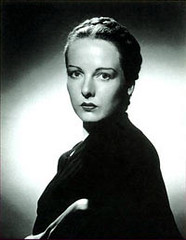how to cook a wolf
Thursday, December 02, 2004
The bookshelf we kept in my home, made of plastic covered particle board, was stuffed to the brim with sociology books, of which my father was a fan, and sundry mediocre hardcover fictions. Fantasy was an underrated virtue in my family.
As I grew up, I slowly plowed through the collection, growing more wary of dense sociology texts while discovering odd hidden gems, such as Maxim Gorky's Mother. The dictionary, an ancient Chamber's Dictionary, already fragile and musty, gradually fell apart over the years, dissolving into two separate sections, then lost it's heart somewhere around Garrulous and Histrionic.
Somewhere between all that, I discovered a book whose name I have since forgot. It was a slim paperback with a blond braided string for a bookmark. I must admit that the book's initial appeal was that rather girlish bookmark, but, eventually breaking the spine, I found myself transported into provincial France.
Thus began a lifelong inspiration, M.F.K. Fisher. Respected as the doyenne of culinary writing of her time, she has since faded from view. But her respect extends beyond the gastronomic realm. W.H. Auden wrote, in the preface for "the Art of Eating," that Fisher was the greatest prose stylists of her generation.
It's easy to understand the laureates, if one has actually read the thing itself. Her descriptions of food, in their settings, often beyond idyllic, seared my pubescent imagination. It was not food writing; it was pure sex. The sensuality of her prose, the way she eased the reader into sympathy, then intimacy, that gradually receding, witholding details, let the imagination flood with sensory frisson.
I remember one particularly singular chapter. She had stopped in a small restaurant, by the side of the mountain. Madame came by with the menu, and a blue trout was ordered. The air was clean, as befits mountain clime, and outside was the clean trinkle of the brook.
The trick with blue trout is technique. A fresh trout must be caught, kept buckingly alive, then thrown into hot boiling stock. If done right, the trout will curl up immediately. The trout is served with this customary twist, as if the pain of it's death was so extreme, so exquisite, that in it's death throes, an ecstatic vision was thrust upon its visage.
I haven't read this passage since my early teens, and yet it stands emblazoned in my mind. I dreamed, and still dream, of having such a dish arriving at my table. The event emphasized by appropriate surroundings, and a worthy candidate whose performance can be immediately assessed by its form. It must be emphasized that what Fisher brought to the table was experience, less taste.
And thus is all good food writing. One cares less whether the thing could be real in any objective sense. One wants to be carried away with the fantasy of the moment, a heightened extra-sensory experience. If you remember a great eating experience, it's usually highlighted by both foreknowledge, a certain foreplay, coupled with performance, the slow dissection and saveur of the plate itself.
If I write about this now it is because, suddenly, Fisher's writing has been reissued. All her classic tomes have been rereleased by Farrar, Stauss and Giroux, including "The Art of Eating," a glorious compilation of "how to cook a wolf," "serve it forth," "consider the oyster," and "an alphabet for gourmets."
Furthermore, Fisher was the translator for Jean Anselme Brillat-Savarin's legendary treatise on gastronomy, "The Physiology of Taste; or Meditations on Transcendental Gastronomy." And yes, he's the guy who's quote prefaces Iron Chef: "Tell me what you eat and I'll tell you who you are."
Not just a pretty face, Mary Frances Kennedy Fisher will make you rething the idea of culinary writing. Nigel Slater, Nigella Lawson, Jamie Oliver, I'd trade them all for this slim elegant seductress who brings the romance back into the kitchen.


<< Home